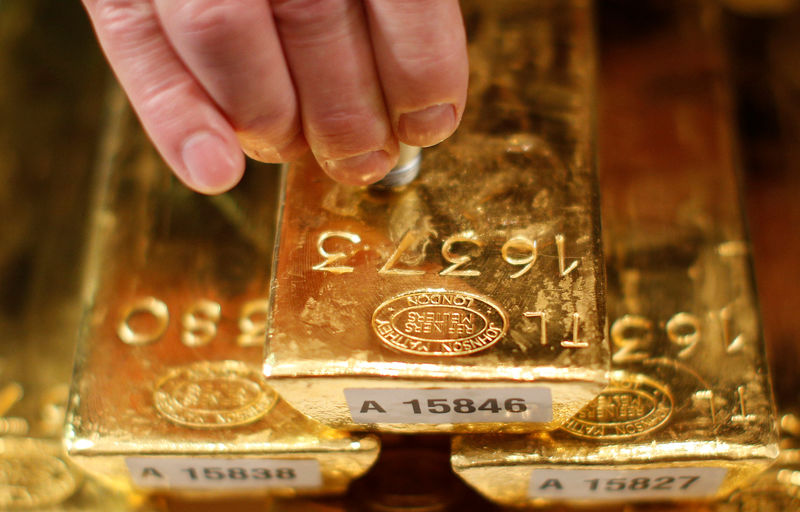Trump says envoy Witkoff had productive meeting with Putin
Spot gold prices climbed again on Thursday, driven by growing expectations that the Federal Reserve might start cutting rates by September as well as softer inflation figures and dovish hints from the central bank.
Clearly, the gold rush has gained momentum this week and shows no signs of slowing down. In this article, we look at key drivers behind the recent rally in gold prices.
Fed to start cutting rates soon
On Monday, Federal Reserve Chair Jerome Powell expressed increased confidence that inflation was declining. Although he did not explicitly mention a rate cut, the markets interpreted his comments as signaling that a cut was imminent.
According to the CME FedWatch tool, there is now a 93.3% chance that the Federal Reserve will lower its target range for the federal funds rate to 5% to 5.25% in September, down from the current 5.25% to 5.50%.
Moreover, there is a 6.7% chance of a half-percentage point cut. This shift follows a 0.1% decrease in the June consumer price index, dropping the annual inflation rate to 3%, the lowest in three years. A month ago, the odds of a September rate cut were around 70%.
Recent data shows a cooling trend in US inflation, with the Consumer Price Index (CPI) unexpectedly decreasing by 0.1%. All this is fueling hopes for monetary easing and therefore could push buyers to buy more gold.
Central bank demand
China's central bank did not add to its gold reserves for the second consecutive month, and gold imports to China via Hong Kong dropped by 38% in April compared to March. The decline to 34.6 metric tons marks a shift from the higher consumption levels seen in the first quarter.
In India, gold demand remained weak, with dealers offering significant discounts to give a push to gold purchases. Indian gold has been sold at a discount for ten straight weeks due to low demand and reduced duty on gold imported with platinum.
By the end of 2023, central banks held approximately 37,000 metric tons of gold, accounting for 16.7% of their total foreign exchange reserves. The largest reserves are held by the United States, Germany, Italy, and France.
However, emerging markets, particularly Russia and China, are rapidly increasing their gold holdings, according to UBS strategists. The buying comes on the back of a broader strategy of central banks to diversify assets and reduce dependence on major currencies like the US dollar, euro, yen, and pound.
Looking ahead, demand for gold has solid support from central banks. An additional factor over the next few years could be our outlook for a weaker US dollar. Central banks in emerging markets tend to intervene in currency markets when their currency appreciates against the US dollar," UBS said.
ETFs have also played a significant role in the recent surge in gold prices. After bottoming out in May, holdings in gold ETFs have started to increase.
"Holdings of gold in ETFs appear to have bottomed in May and they are now starting to increase again. This indicates that there could be a new wave of demand for gold coming through this channel, particularly with financial advisors and institutions becoming more active," a portfolio manager at Sprott Asset Management was quoted as saying by Reuters.
What’s the outlook for gold prices
Despite positive real interest rates, gold prices have hit record highs, HSBC's precious metals analysts noted earlier this week.
"Gold is historically sensitive to real rates, and while there has been a notable disconnect in this relationship, we expect real rates to weigh on gold towards the end of 2024 and 2025,” they wrote.
Although ETFs continue to see outflows, strong purchases in the OTC market and by institutional investors have offset this trend. Net long positions on the Chicago Mercantile Exchange (CME) remain high, but analysts believe they may not increase much from current levels.
"Market sentiment is clearly bullish, and while the near-term upward trajectory shows no signs of slacking, we think prices are progressively overstretched," they noted.
HSBC has raised its average gold price forecasts for 2024 due to short-term strength. However, the bank expects a potential price decline by Q4 this year or into 2025.
Specifically, analysts at HSBC have increased their average gold price forecast for 2024 from $2,160/oz to $2,305/oz. However, their 2025 estimates have been lowered from $2,105/oz to $1,980/oz, hinting towards a significant drop from current levels.
Analysts expect gold prices to rebound in 2026, raising their average price projection for that year from $1,880/oz to $2,025/oz.
On the contrary, Citi analysts are of the view that gold prices could soar to $3,000 per ounce due to significant financial inflows. The bank said that a weakening US labor market, disinflation, and a soft June CPI as factors improve the case for a dovish Federal Reserve pivot at the July FOMC meeting.
"This should be bullish for gold and silver into the year-end," Citi noted.
